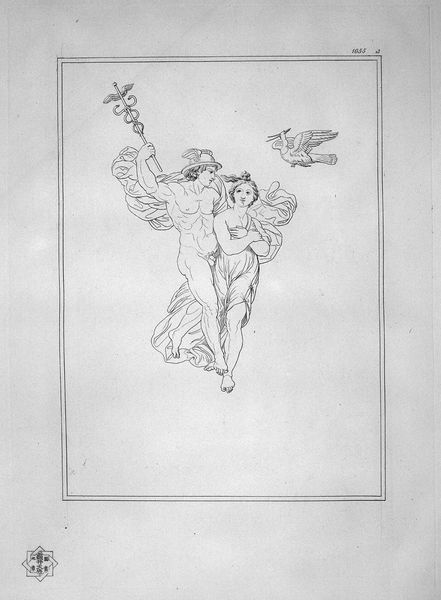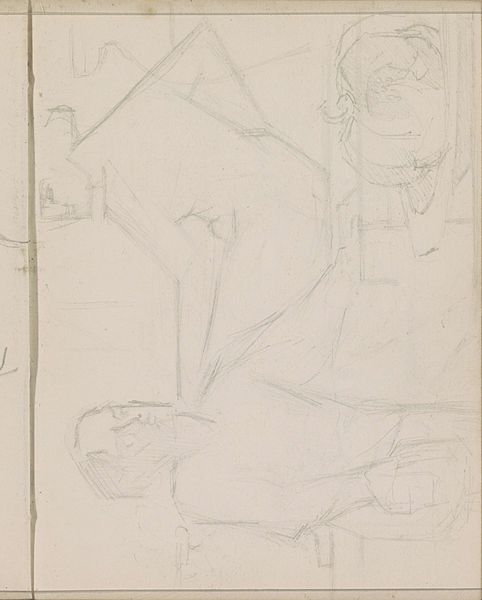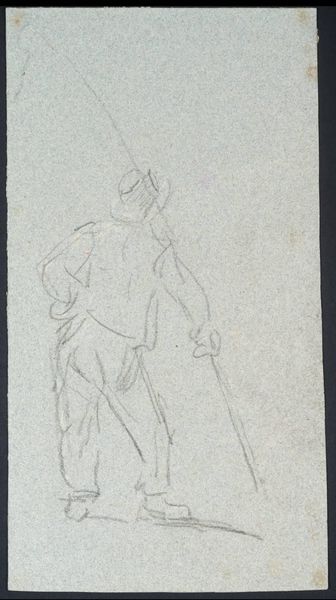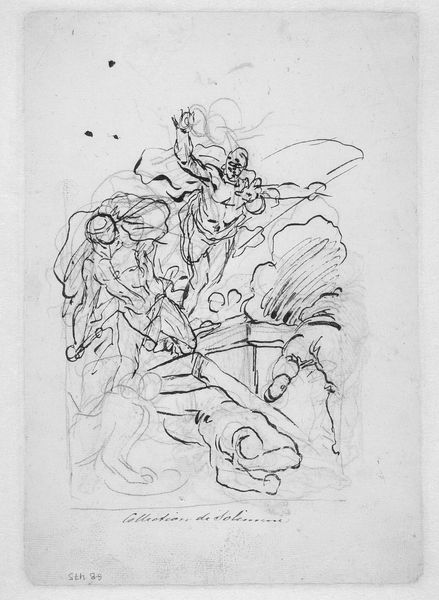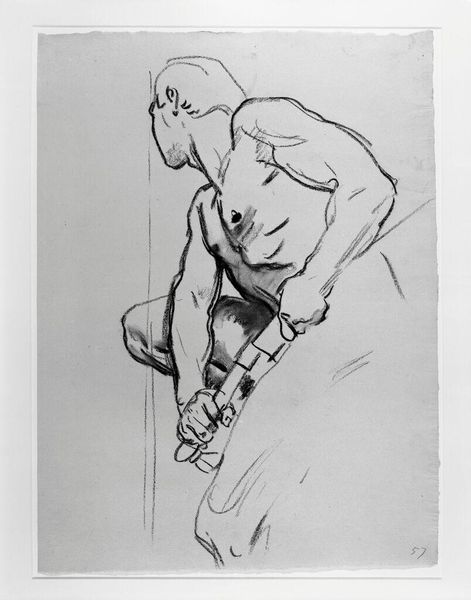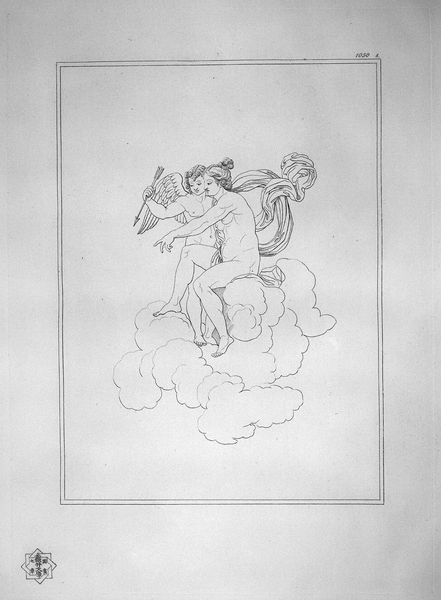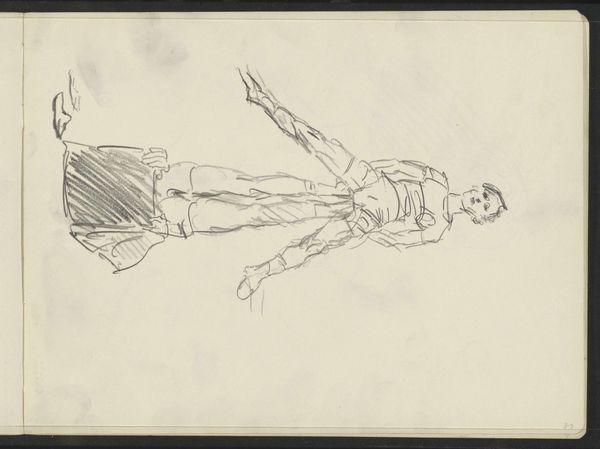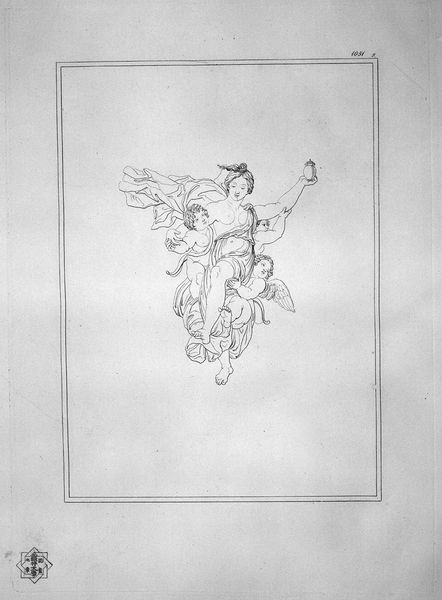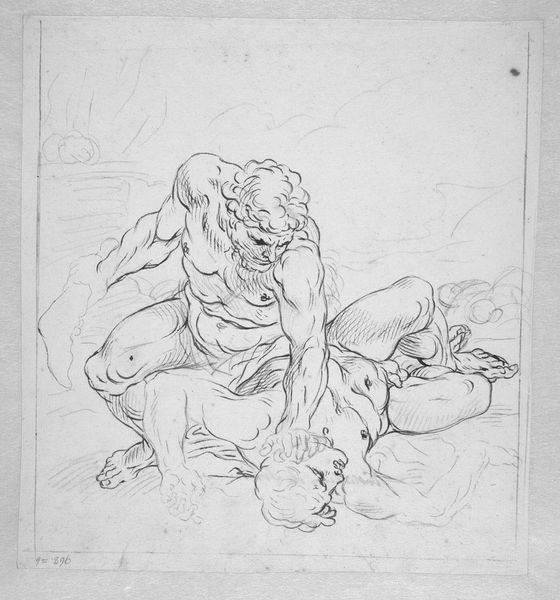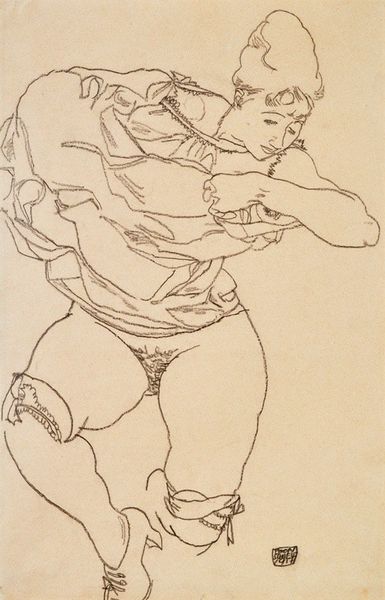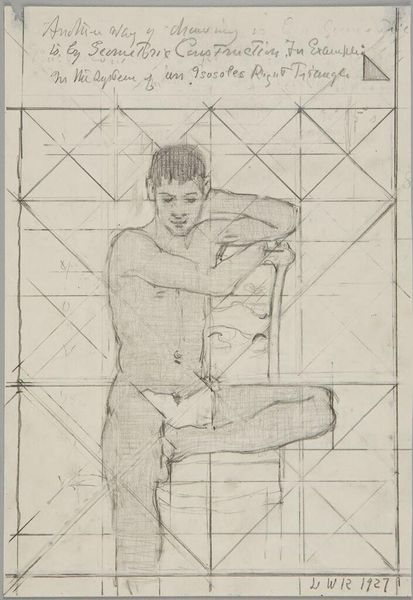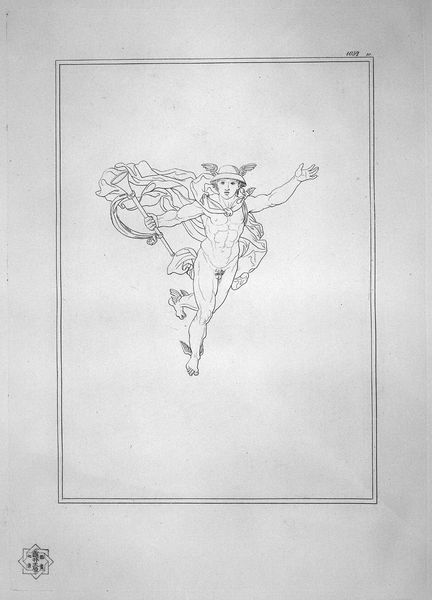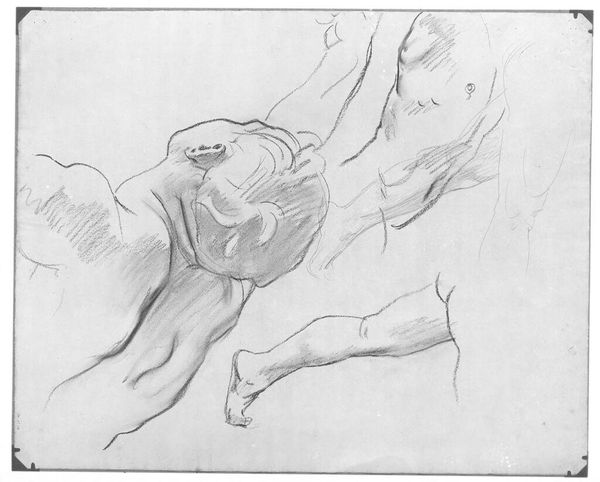
drawing, ink
#
drawing
#
figuration
#
11_renaissance
#
ink
#
history-painting
#
academic-art
#
italian-renaissance
Dimensions: 297 mm (height) x 208 mm (width) (bladmaal)
Editor: So here we have a drawing from somewhere between 1550 and 1599, an ink drawing actually, titled "Study for a Roman general in a pendentive," currently residing in the Statens Museum for Kunst. It depicts exactly what the title suggests, with rapid and sketchy lines giving it a preparatory air, right? What captures you most about this piece? Curator: Oh, the raw energy in those lines! You see, this isn’t just a sketch; it’s a captured thought. The artist is wrestling with form, light, maybe even the weight of history itself. Think of this general not just as a warrior, but as an idea being hammered out in real time. That pentagonal frame– it’s not just decorative; it’s constraining, challenging the artist to bring a dynamic figure to life within that architectural boundary. Do you feel that tension between the figure and the form, almost like a philosophical debate rendered in ink? Editor: I do now! Especially with that thoughtful pose and downward glance – that suggests inner conflict, too. It really is like watching the artist figuring things out. So, this was never part of a final painting, then? Curator: Maybe, maybe not. Think of the Renaissance workshop as a laboratory of ideas. Even if this study didn’t directly translate into a final painting, its energy, that searching quality, very well may have found its way into some now-lost masterpiece! Art whispers, echoes, it almost never shouts a finished, perfect statement. It is in this way very human. What stays with you, reflecting on that general? Editor: I think I appreciate those artistic 'figuring out' whispers the most, honestly, and how such old works show so much human movement to their creative process! Curator: Exactly, me too, that hum of possibility! It almost seems like we caught the Renaissance artist deep in thought, during that moment between vision and realisation. Wonderful, isn't it?
Comments
No comments
Be the first to comment and join the conversation on the ultimate creative platform.
